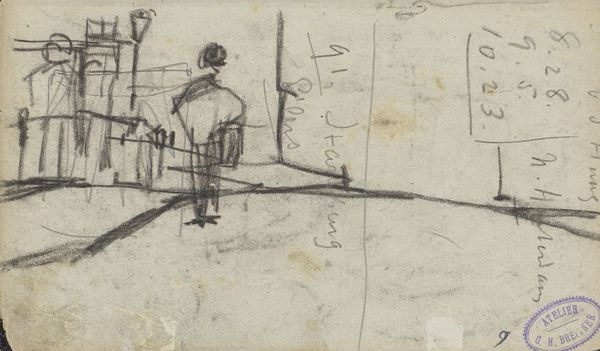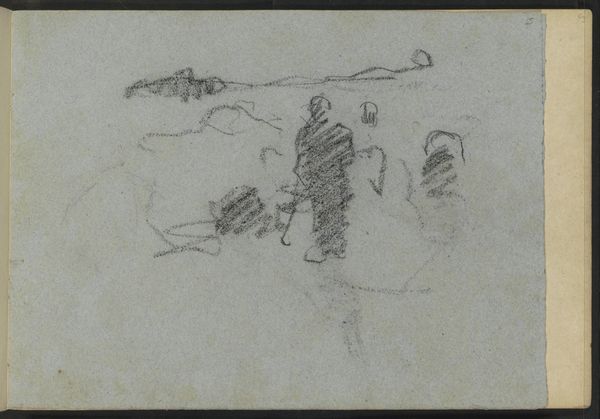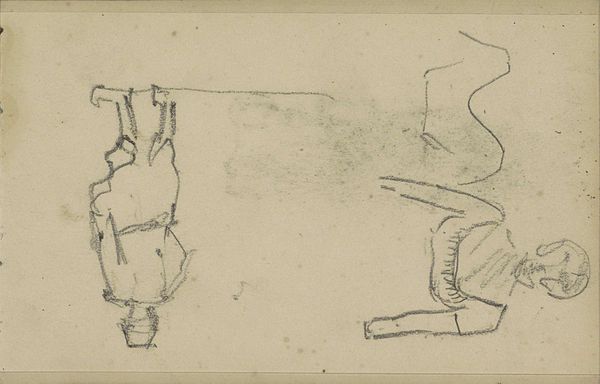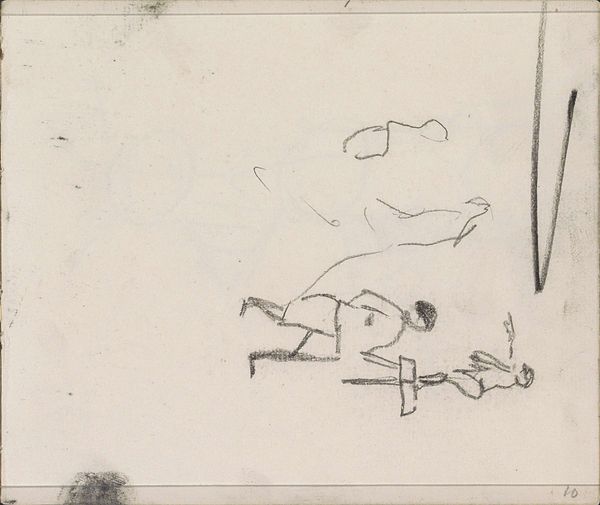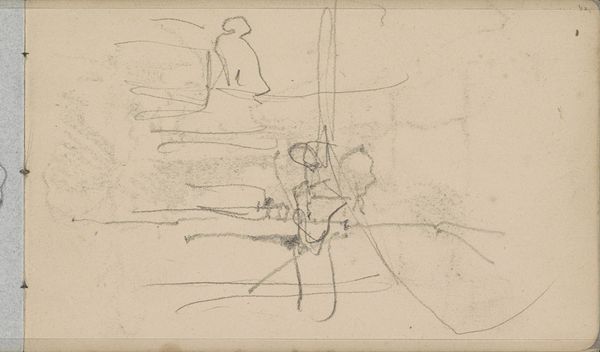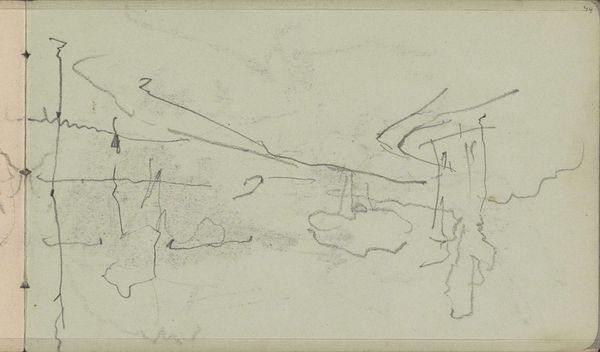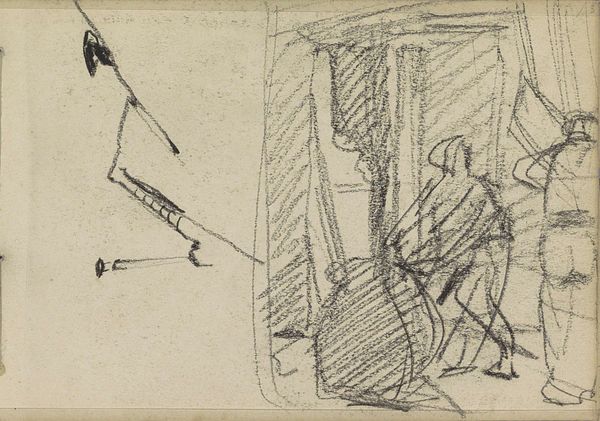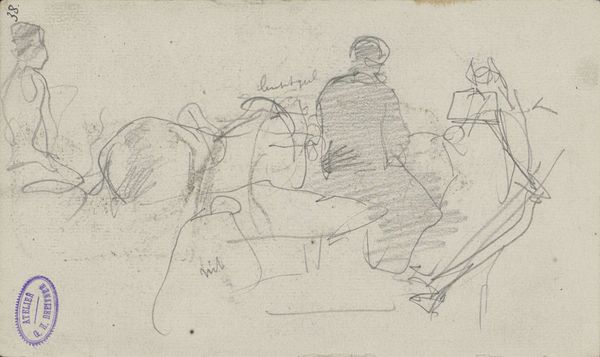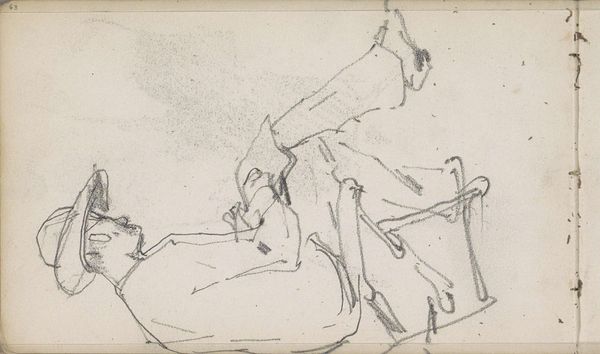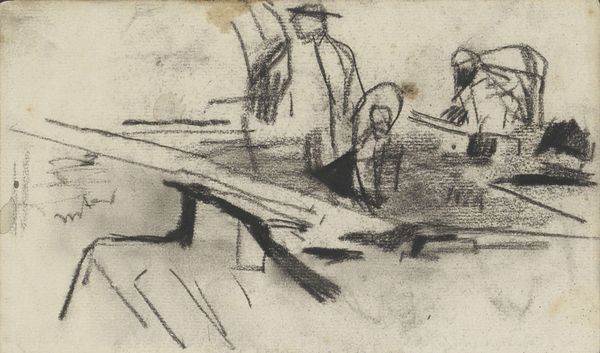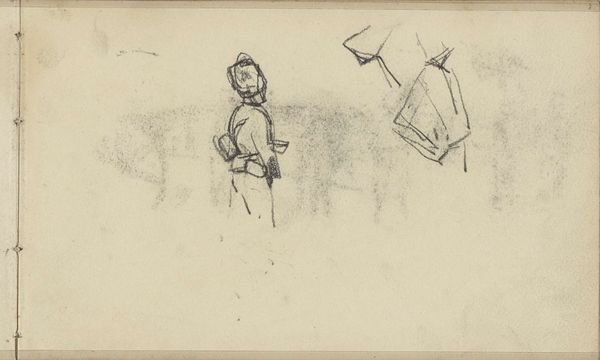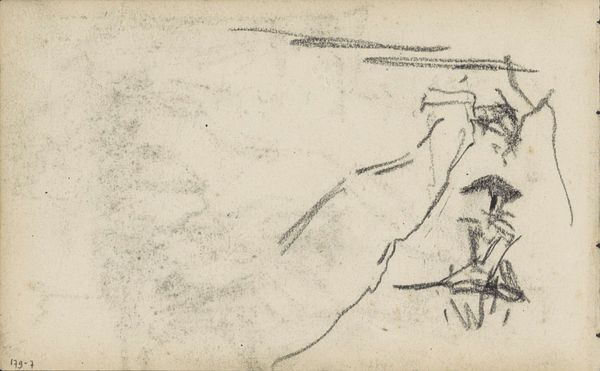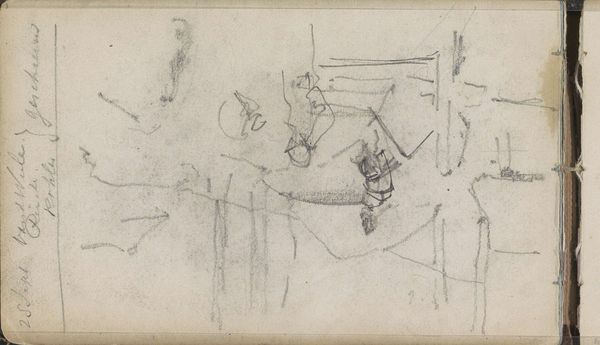
Dimensions: height 127 mm, width 201 mm
Copyright: Rijks Museum: Open Domain
Curator: Alright, so this quick, very light graphite sketch is called "Three Men Carrying a Pole, possibly a Pile Driver" by George Hendrik Breitner, done around 1906. It resides here at the Rijksmuseum. What’s your take on it? Editor: Raw, immediate. There’s such an unfinished quality to it that paradoxically communicates a great sense of labor and effort. The figures are spectral, almost vanishing into the ether as they go about their work. Curator: Breitner had such an interesting eye for capturing daily life, and he really captures movement well in these pencil sketches. He was known for photographing working-class life on the streets, using a camera, but he would often do preliminary sketches before photography. I wonder, what pole are these men carrying? And what’s a "heipaal" in Dutch, I wonder. Editor: The pole itself feels almost secondary to the men bearing it. It’s about burden, toil, and collective effort. Even just looking at this simple drawing I am reminded of the "Judgment of Paris" as painted by Rubens, especially considering the fact that Rubens, also from the Netherlands, would place that particular legend within a Dutch pasture scene as a comment about cultural memory. Curator: Ooh, I can see a kind of relationship in its symbolic function. Interesting association. Breitner was such an advocate for documenting everyday life, for making the unseen visible, and that sentiment does translate throughout the work. It almost feels rebellious that he focuses his art like this, toward that particular segment of society, during that particular moment. It's a sketchbook drawing, very different from his painting style. Editor: Exactly. In iconographic terms, consider the verticality. It represents aspiration, reaching towards the heavens, the potential for grand achievements…but they are rendered, quite literally, on the backs of these laborers, obscuring any singular grand meaning. Curator: You are right: he manages to ennoble manual labor itself here through those sketches. Not sure whether it can sustain such highfalutin cultural interpretation, but for the quick record he made, he certainly left us something for discussion. Editor: It's amazing how such an understated image can hold so many meanings. Something that can both hold your gaze and your imagination at the same time is very well done indeed!
Comments
No comments
Be the first to comment and join the conversation on the ultimate creative platform.
